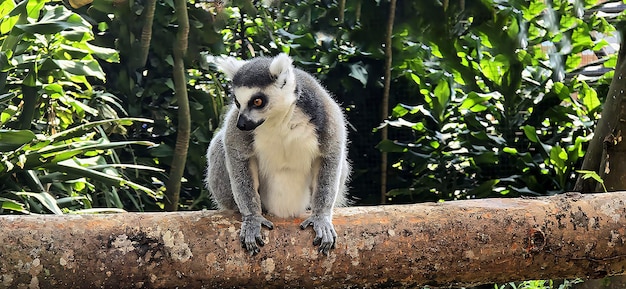Ring-Tailed Lemur (Lemur catta) – Large Strepsirrhine Primate for Free Download
About the Ring-tailed Lemur (Lemur catta)
The Ring-tailed Lemur, scientifically known as Lemur catta, is a fascinating primate that has captured the hearts of many. Often referred to as maki maki or hira Tsimanampe, these creatures are one of the most recognizable species of lemurs due to their distinctive appearance and social behavior.
Physical Characteristics
Ring-tailed lemurs are known for their striking appearance, particularly their long, striped tails. Here are some key features:
- Size: These lemurs typically weigh between 5 to 10 pounds.
- Color: Their fur is mostly gray with white underbellies and black patches around their large, expressive eyes.
- Tail: Their long tails can be longer than their bodies, featuring black and white rings that help them balance and communicate.
Habitat and Distribution
Ring-tailed lemurs are primarily found in the dry forests and scrublands of Madagascar. They thrive in a variety of habitats, which include:
- Deciduous forests
- Spiny forests
- Gallery forests near rivers
Social Structure
These lemurs are highly social animals that live in groups known as troops. Their social structure is quite interesting:
- Troop Composition: Troops usually consist of about 6 to 30 members, primarily females.
- Hierarchy: Female lemurs are generally dominant, leading the group and making decisions.
- Communication: They use a variety of vocalizations, body language, and scent marking to communicate with one another.
Diet and Feeding Habits
Ring-tailed lemurs are primarily herbivores, and their diet consists of:
- Fruits
- Leaves
- Flowers
- Bark
They are known to be selective feeders, often choosing food that is high in fiber and low in toxins.
Conservation Status
Unfortunately, the Ring-tailed Lemur is currently classified as endangered. The main threats to their survival include:
- Habitat loss due to deforestation.
- Illegal hunting and poaching.
- Climate change affecting their natural habitats.
Conservation efforts are vital to ensuring the future of this iconic species.
Final Thoughts
The Ring-tailed Lemur is not just a beautiful animal; it is a vital part of Madagascar's ecosystem. Learning about these unique creatures can help raise awareness about their plight and the importance of preserving their natural habitats. Whether you admire them from a distance or are lucky enough to see them in the wild, their charm and intelligence remind us of the rich biodiversity our planet still holds.












